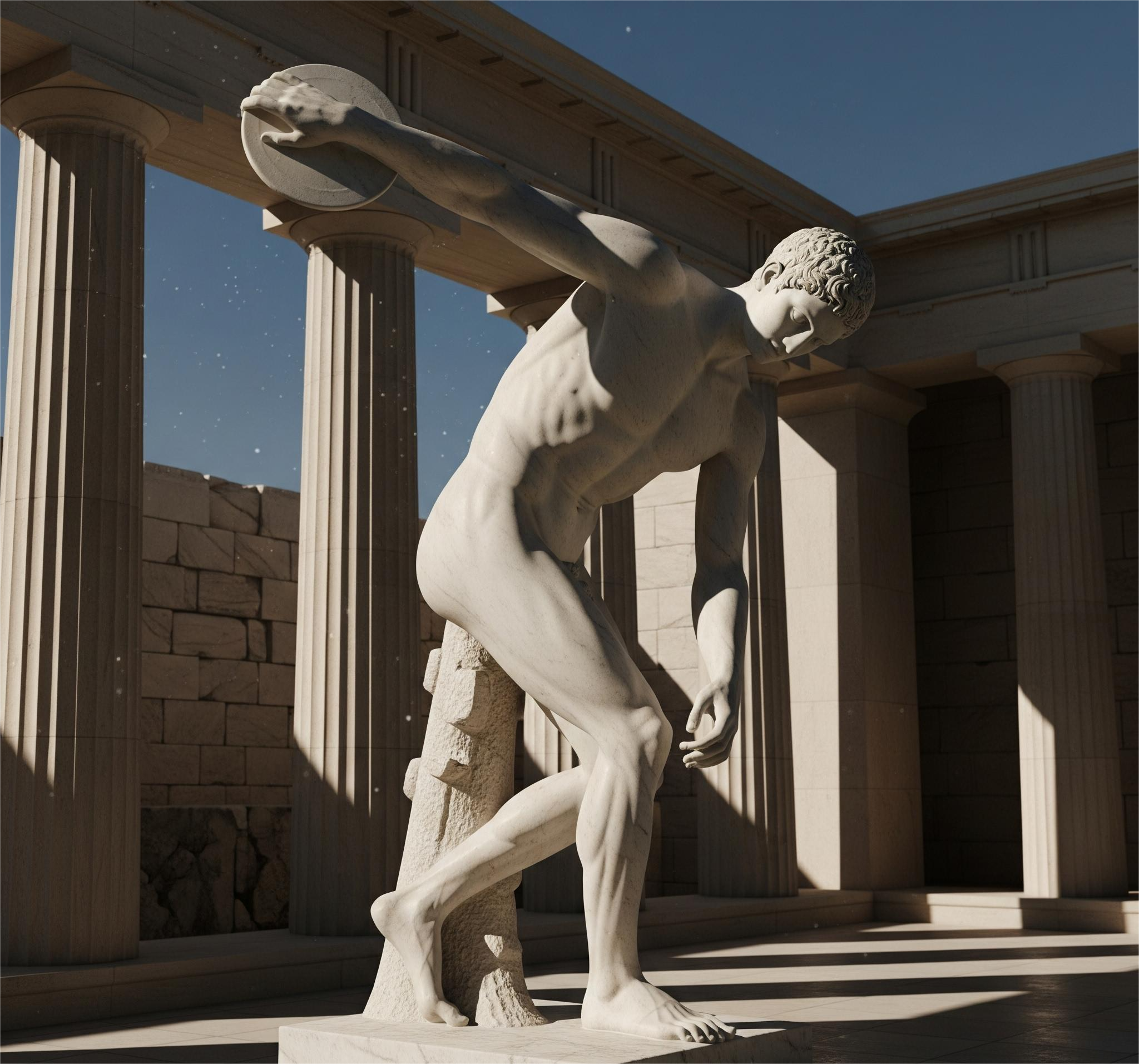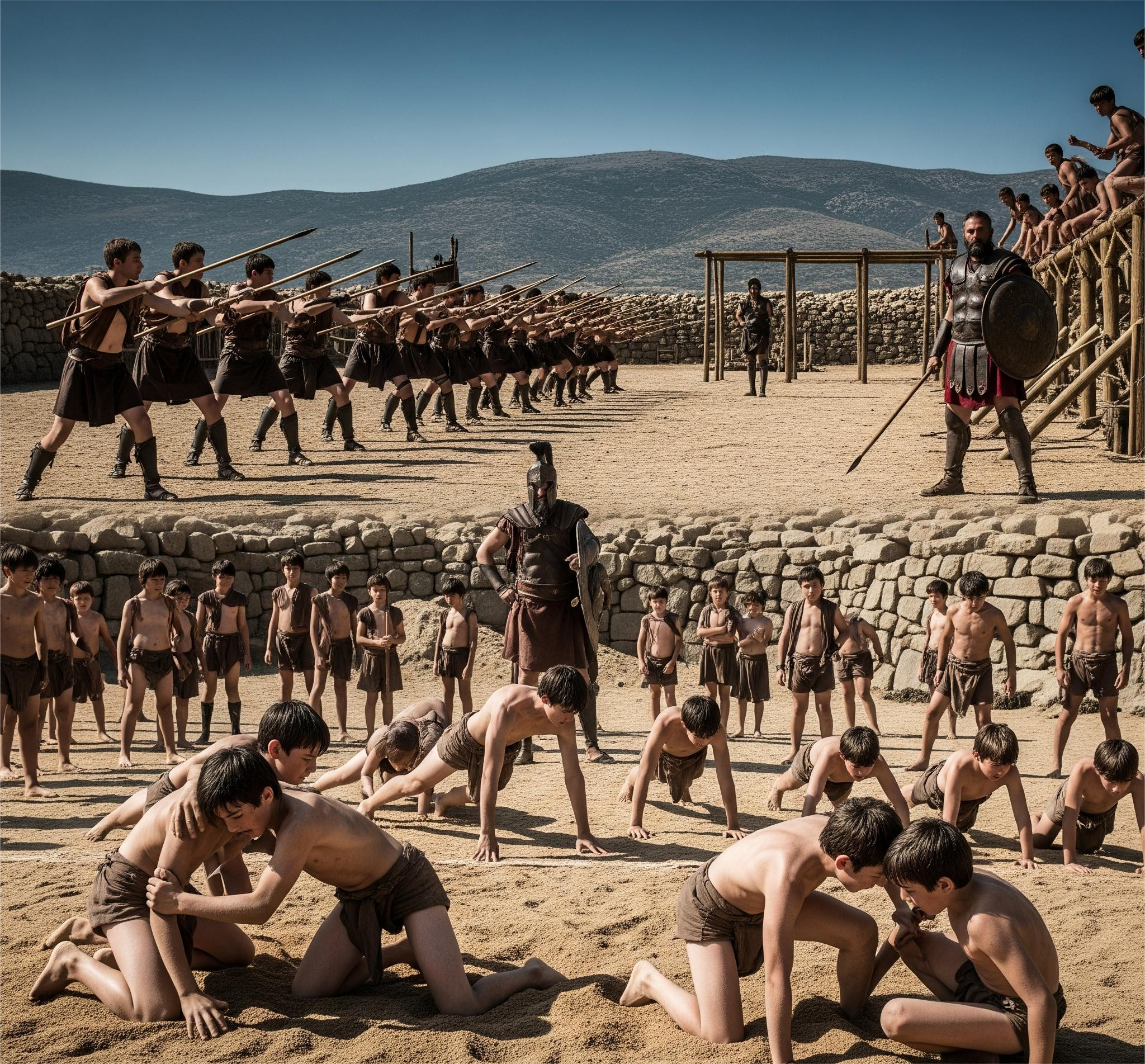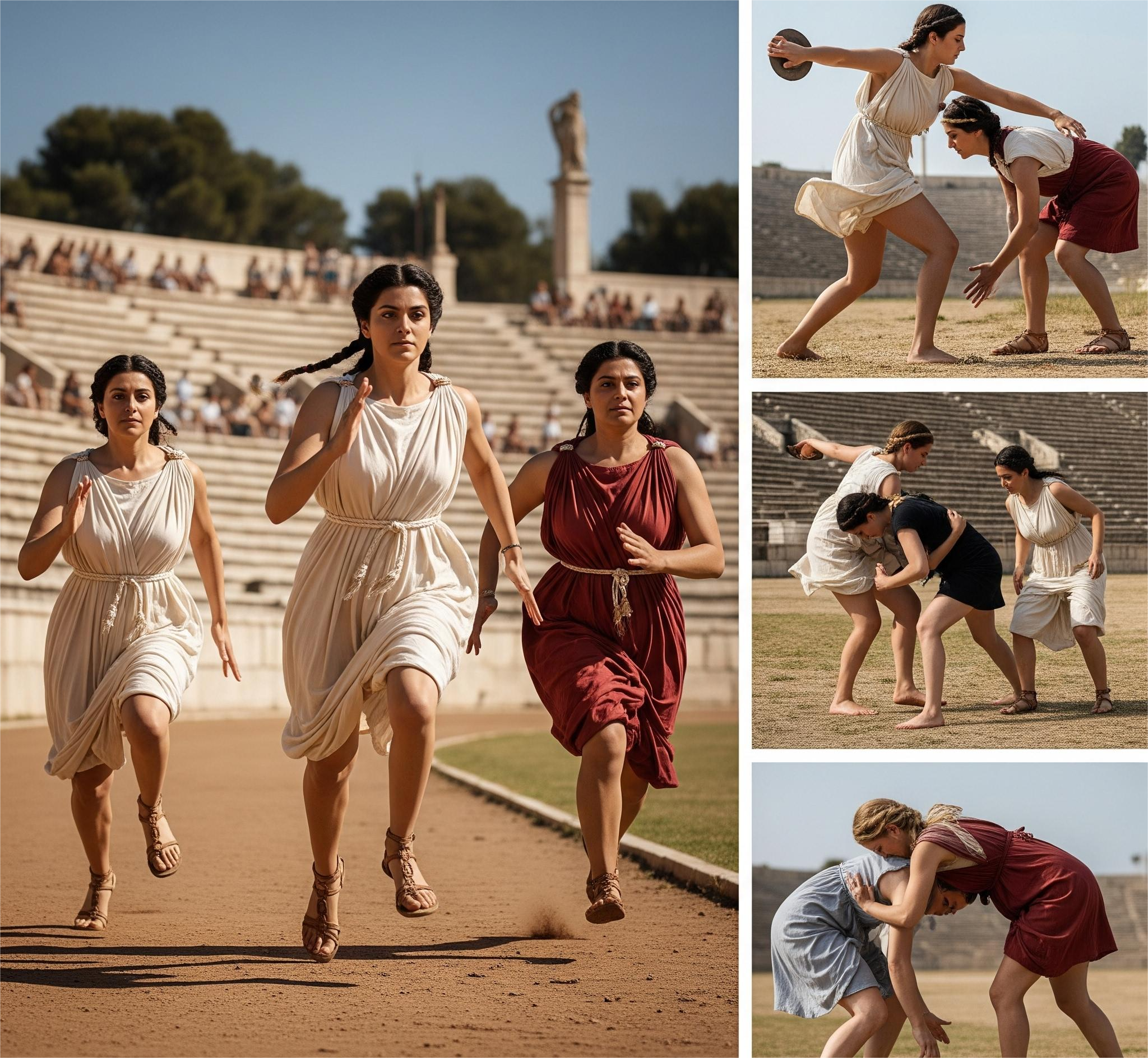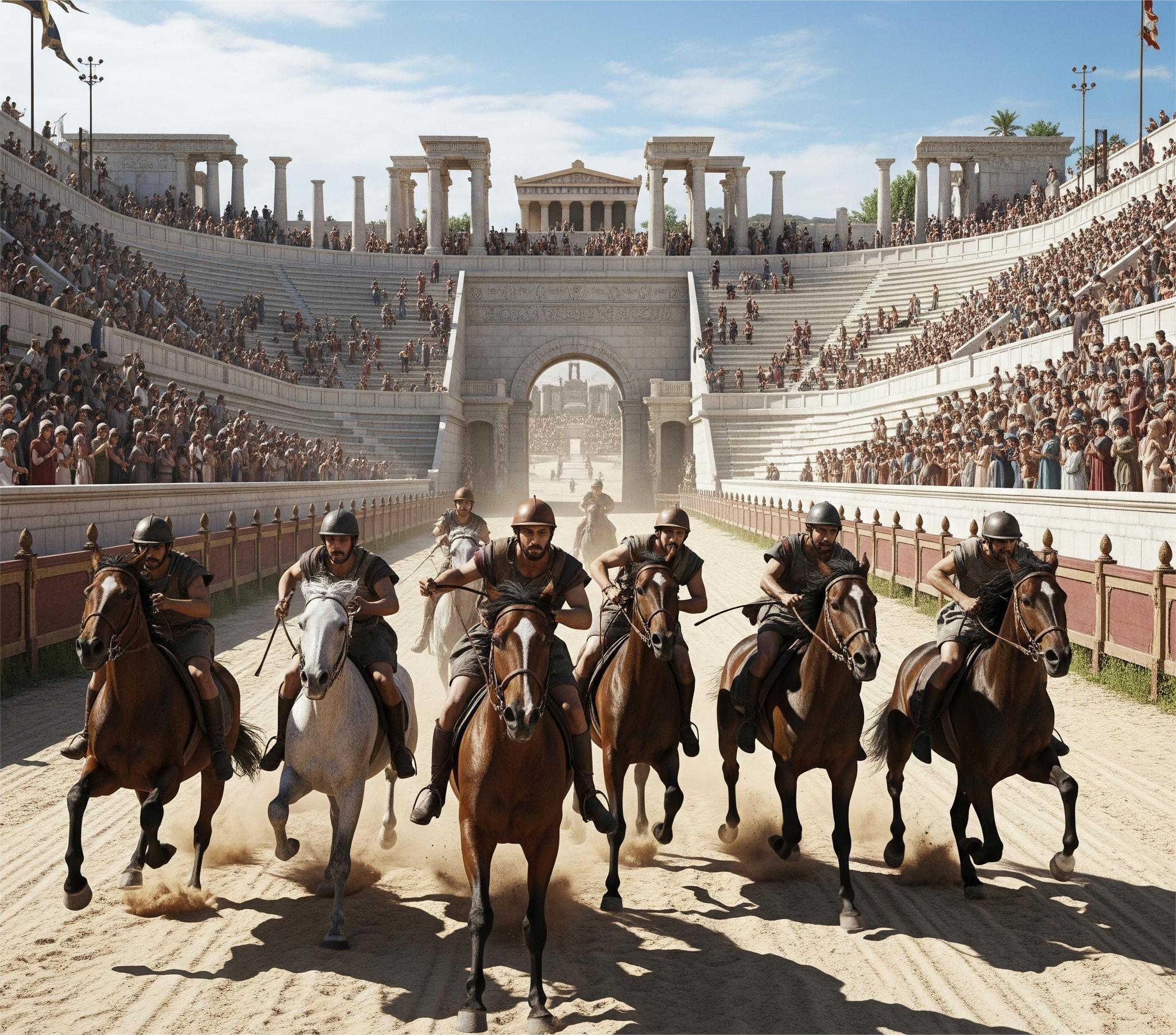When picturing ancient Greek athletes, we often imagine muscular figures sprinting or wrestling in dusty arenas. But these feats of strength and skill weren’t performed barehanded—many required specialized equipment. From the discus and javelin to halteres and strigils, the tools of Greek athletics reveal a culture that celebrated physical achievement with ingenuity, ritual, and precision.
1. The Discus (Diskos)
Used in the pentathlon, the discus was a heavy, circular object thrown for distance.
Typically made of bronze, iron, or stone, each discus varied in size and weight depending on the athlete’s age and skill.
Unlike modern discuses, ancient versions were more varied and didn’t conform to standard measurements.
Technique mattered more than raw power—the throw involved graceful twisting motions, as famously depicted in Myron’s Discobolus.
2. The Javelin (Akon)
Also part of the pentathlon, the javelin was a wooden spear thrown for distance or accuracy.
A key feature was the ankyle, a leather thong looped around the shaft. It gave the javelin rotational momentum, much like a modern rifled bullet.
Events included both long-distance throws and target-based contests.
Javelin throwing honed both military skills and athletic coordination, bridging the worlds of sport and warfare.
3. Halteres: Weights for Jumping
In the long jump (also a pentathlon event), athletes used halteres, or hand-held weights, to propel themselves farther.
Made of stone or metal, halteres were swung forward and back to generate momentum during the jump.
They typically weighed between 2 to 9 kilograms.
The jump itself was rhythmically coordinated, often accompanied by flute music to help maintain tempo.
4. The Strigil and Oil Flask (Aryballos)
While not performance tools, these items were essential to an athlete’s preparation and recovery.
Athletes oiled their bodies before exercising to protect their skin and aid flexibility.
After training, they used a strigil—a curved metal scraper—to remove oil, sweat, and dust (called gloios), which was often considered a valuable substance.
This cleansing process was both ritualistic and hygienic, typically performed in a palestra (wrestling school) or gymnasium.
5. Protective Gear and Training Tools
While ancient Greek athletes often competed nude, some events and training sessions used gear to protect or strengthen the body.
Cestus: A type of leather glove or wrap worn in boxing (pyx). It offered some protection but also added weight and impact to punches.
Punching bags (korykos): Used in training to build strength and precision, much like today.
Dummy opponents or wooden posts helped wrestlers and pankratiasts (fighters in the no-holds-barred pankration) practice throws and grips.
6. Footwear and Running Tracks
Although competition was barefoot, training sometimes involved sandals or ankle weights to increase endurance.
Runners trained on stadiums (track fields) made of packed earth, with distances marked by stone starting blocks (balbis).
These starting blocks had grooves to secure the toes, helping runners launch forward with explosive force.
7. Other Implements and Facilities
Hippodromes: Used for horse and chariot races, featuring turning posts (nyssa) that required tight maneuvering.
Javelin targets and nets: Used during practice to hone accuracy.
Clay or metal weights: For strength training, akin to modern dumbbells.








